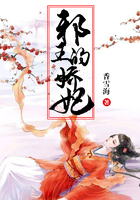A species of yucca called sotal, or saw-grass, grows plentifully in places, and is sometimes used as food for cattle when grass is scarce. In its natural state it is inaccessible to cattle because of its hard and thorny exterior. To make it available it is cut down and quartered with a hoe, when the hungry cattle eat it with avidity. Where the plant grows thickly one man can cut enough in one day to feed several hundred head of cattle.
There are several other varieties of yucca that possess no particular value, but all are handsome bloomers, and the mass of white flowers which unfold during the season of efflorescence adds much to the beauty of the landscape.
The prickly pear cactus, or Indian fig, of the genus Opuntia is a common as well as a numerous family. The soil and climate of the southwest from Texas to California seem to be just to its liking.
It grows rank and often forms dense thickets. The root is a tough wood from which, it is said, the best Mexican saddletrees are made.
The plant consists of an aggregation of thick, flat, oval leaves, which are joined together by narrow bands of woody fiber and covered with bundles of fine, sharp needles. Its pulp is nutritious and cattle like the young leaves, but will not eat them after they become old and hard unless driven to do so by the pangs of hunger. In Texas the plant is gathered in large quantities and ground into a fine pulp by machinery which is then mixed with cotton-seed meal and fed to cattle. The mixture makes a valuable fattening ration and is used for finishing beef steers for the market.
The cholla, or cane cactus, is also a species of Opuntia, but its stem or leaf is long and round instead of short and flat. It is thickly covered with long, fine, silvery-white needles that glisten in the sun. Its stem is hollow and filled with a white pith like the elder. After the prickly bark is stripped off the punk can be picked out through the fenestra with a penknife, which occupation affords pleasant pastime for a leisure hour.
When thus furbished up the unsightly club becomes an elegant walking stick.
The cholla is not a pleasant companion as all persons know who have had any experience with it. Its needles are not only very sharp, but also finely barbed, and they penetrate and cling fast like a burr the moment that they are touched. Cowboys profess to believe that the plant has some kind of sense as they say that it jumps and takes hold of its victim before it is touched. This action, however, is only true in the seeming, as its long transparent needles, being invisible, are touched before they are seen. When they catch hold of a moving object, be it horse or cowboy, an impulse is imparted to the plant that makes it seem to jump. It is an uncanny movement and is something more than an ocular illusion, as the victim is ready to testify.
These desert plants do not ordinarily furnish forage for live stock, but in a season of drought when other feed is scarce and cattle are starving they will risk having their mouths pricked by thorns in order to get something to eat and will browse on mescal, yucca and cactus and find some nourishment in the unusual diet, enough, at least, to keep them from dying. The plants mentioned are not nearly as plentiful now as they once were.
Because of the prolonged droughts that prevail in the range country and the overstocking of the range these plants are in danger of being exterminated and, if the conditions do not soon change, of becoming extinct.
The saguaro, or giant cactus, is one of nature's rare and curious productions. It is a large, round, fluted column that is from one to two feet thick and sometimes sixty feet high. The trunk is nearly of an even thickness from top to bottom but, if there is any difference, it is a trifle thicker in the middle. It usually stands alone as a single perpendicular column, but is also found bunched in groups. If it has any branches they are apt to start at right angles from about the middle of the tree and curve upward, paralleling the trunk, which form gives it the appearance of a mammoth candelabrum.
The single saguaro pillar bears a striking resemblance to a Corinthian column. As everything in art is an attempt to imitate something in nature, is it possible that Grecian architecture borrowed its notable pattern from the Gila valley?
Southern Arizona is the natural home and exclusive habitat of this most singular and interesting plant and is, perhaps, the only thing growing anywhere that could have suggested the design.















